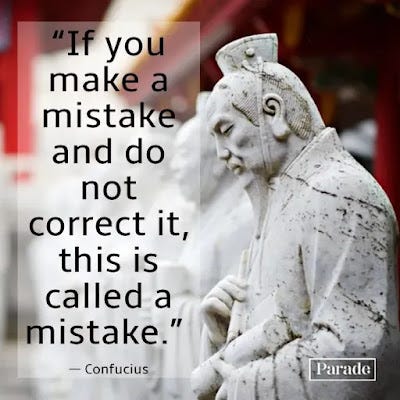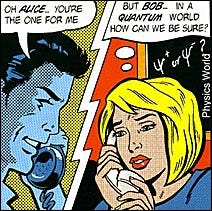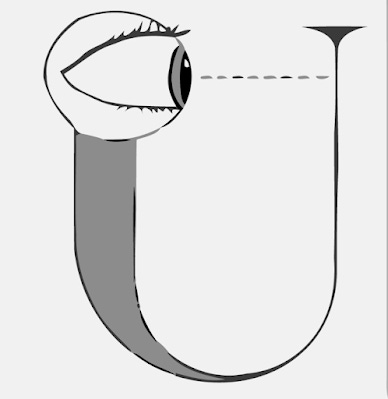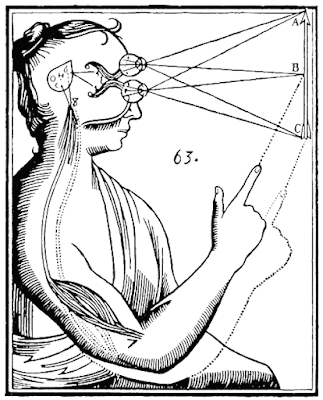The Art of Criticism: How Easy It Is to Find Faults in Science, Even Among Experts
From Penrose's Errors to Thuan's Quantum Missteps – A Lesson in Humility, Skepticism, and Constructive Dialogue
Criticism is easy
To find faults and even errors in someone else’s work is not that difficult. And to make an error is easy as well. Famous people, even “authorities”, make errors.
A couple of my papers:
“Geometry and Shape of Minkowski's Space Conformal Infinity”, Reports on Mathematical Physics, 69 (2012), 179-195.
"On Conformal Infinity and Compactifications of the Minkowski Space", Advances in Applied Clifford Algebras, DOI: 10.1007/s00006-011-0285-5, 2011,
see also "Compactified Minkowski Space: Myths and Facts", Prespacetime Journal, 3(2) (2012), 21-30.
…were devoted to straightening out errors caused by unfortunate statements by a renowned mathematical physicist, Sir Roger Penrose. In his 1964 paper “The Light Cone at Infinity”. Roger Penrose made a couple of confusing statements concerning the shape of “space-time infinity”. Both physicists and mathematicians have tried to prove rigorously what they thought was the essence of the comments made by Penrose, but they have made errors in their proofs. How else can you prove a false theorem if not by making an error in its proof? These errors have found their way into monographs, and no referee has thus far noticed that they are erroneous. Probably one of the reasons for that is the fact that Roger Penrose is considered to be an “authority” – which certainly he is, except that even authorities make errors and need to be checked.
Even Experts Make Mistakes
We all make errors. I make them too. Just a few years ago I discovered one erroneous statement in one of my old papers, concerning the localization of photons – no one had ever pointed it out to me. Now I have to find out the corrected and true statement and make it public. But of course, that may take many hours of calculations.
Or, for example, in my paper, "On the Bundle of Clifford Algebras Over the Space of Quadratic Forms", originally I made a serious error. A Lemma and its proof were false! The early version of this paper, with the error, is available on arxiv. In the later version, and in the final publication, it has been corrected. This time, thank God, the Referee understood my paper better than I did!
The fact that errors are not that difficult to make can so easily be used as a means to destroy someone’s reputation. If some author wrote a book that is quite good and useful, but it also contains some unfortunate statements and even errors, then , when several critics join in to attack and point out only the errors – the result can be disastrous for the author.
Trinh Xuan Thuan - "The Quantum and the Lotus"
I will demonstrate it right here by criticizing a particular piece written by a prolific and original author – namely Trinh Xuan Thuan, a Professor of Astronomy at the University of Virginia. Trinh Xuan Thuan is well known to the general public for his books. But here I will address his contribution to “The Boundaries of Knowledge in Buddhism, Christianity and Science”. Trinh Xuan Thuan is presented there as follows:
His field of specialty is Big Bang nucleosynthesis and galaxy formation and evolution. He has written several acclaimed books for the general public including “The Quantum and the Lotus” (2001) which explores the many remarkable connections between the ancient teachings of Buddhism and the findings of modern science.
The paper by Thuan is twenty pages long and is addressed to philosophers rather than to the general public, therefore one would expect it to be somewhat more precise than his popular science books. But I will dare to make a serious criticism of some of its parts, with the aim of being as nasty as possible, and yet I will do my best to sustain a scientific level of discussion – thus I will avoid pushing the readers’ emotional buttons – as it often happens when critics and debunkers aim at simply ruining someone’s reputation.
Perhaps I should start with the fact that I have downloaded from Internet Thuan’s impressive Curriculum Vitae and checked that in his listed over-150 scientific publications there is not even one that is devoted to the foundational problems of quantum theory – Thuan is an astrophysicist after all. And yet in his books, and in his article that I am going to criticize, a lot of space is devoted to the fundamental questions of quantum theory. To make errors in an unfamiliar territory is especially easy, that is why I will concentrate on this area. Of course it is easy to understand why Thuan is devoting so much attention to quantum theory: Quantum theory is quite often discussed in relation to Buddhist, and, more generally, Eastern philosophy, which Thuan seems to advocate.
Before going into details, let me outline Thuan’s philosophical position – as far as I can guess from his many writings. First of all Thuan stresses that while in other religions Science and religion are separated, nevertheless, a fruitful dialogue can be established between the spiritual tradition of Buddhism and Science. But Buddhism is not interested in learning the truth about the world outside. Truth in Buddhism, as I understand, has no value itself. It has a value only as far as it can lead to “enlightenment”.
What is enlightenment? In “Quantum and the Lotus: A Journey To The Frontiers Where Science And Buddhism Meet” we find a dialogue between Trinh Xuan Thuan and a Buddhist monk, Matthieu Ricard.
So I am given to understand that Ricard is a knowledgeable man in the matter of Buddhism, and from his book “Happiness: A Guide to Developing Life's Most Important Skill”
I infer that enlightenment can be also characterized as “happiness” or “a state of a continuous bliss.” Therefore if a given Truth will make a given person unhappy, then such a Truth will be of no interest for a Buddhist. If I am right with this interpretation, then it should be no surprise to find out that Thuan selects only those truths that fit his philosophy. Other truths, in particular those that contradict his arbitrarily taken philosophy, he avoids. We will see how it works in the examples that follow.
My aim here is to demonstrate how easy it is to criticize (especially with some authors). But, in addition, the content of these posts has also a pedagogical function.
Thuan and Heisenberg
To start with, let us consider this statement of Thuan:
Heisenberg demonstrated that there is a fundamental limitation to our ability to know the microscopic world.
Yes, that is true. Heisenberg derived a certain mathematical inequality, known as Heisenberg’s uncertainty principle, and he proposed, in a particular example, one way of understanding it. Heisenberg’s uncertainty principle deals with statistical averages for pairs of complementary observables, not with individual events. As Stanford Encyclopedia of Philosophy points it out: “The interpretation of these relations has often been debated. … The debate between these different views has been addressed by many authors, but it has never been settled completely.” Moreover, Heisenberg’s uncertainty relations are based on the mathematical formalism of quantum mechanics, and these may well change in the future, when quantum theory will be replaced by another theory.
Cartoon by John Richardson for Physics World, March 1998
Therefore, contrary to what Thuan is saying, Heisenberg did not demonstrate that there is a fundamental limitation to our ability to know the microscopic world. Heisenberg simply presented some particular arguments that this may, indeed, be the case, but he did not demonstrate it!
Suggestion vs. Truth
But Thuan interprets Heisenberg’s suggestion as if such a limit has been accepted as unquestionable truth, beyond any doubt, probably because such an interpretation fits the Buddhist philosophy that he has arbitrarily chosen. In short: Thuan, in his statement about Heisenberg, distorts the truth. But then it gets even worse (or better, depending on your point of view). Thuan writes:
There is thus a basic limitation to our knowledge of the atomic and sub-atomic world. There is no hope of ever measuring both the momentum and the position of a subatomic particle at the same time with any arbitrary accuracy.
The problem with what Thuan wrote above is that no basic limitation can follow from a theory that has been tested only in certain circumstances and the applicability of which is doubtful in other circumstances. And, moreover, while some people give up and abandon any hope, some others are still working on it – for instance there are alternatives to the Copenhagen interpretation of quantum theory, and to the orthodox, textbook version of quantum theory itself.
Thuan Neglects Scientific Logic: Gets Religion
The reasoning of Thuan shows his neglect of scientific logic. From “Heisenberg tells us” he deduces that what Heisenberg tells us - must be accepted without any questioning whatsoever. That sounds more like a religion than Science. And that seems to be the point: Thuan is trying to prove Buddhism with science!
Thuan writes:
Quantum mechanics states that when an electron is in this wave state, we can never predict where it will be at any given moment; all we can do is evaluate the probability of its being in a particular position.
Quantum mechanics cannot “state” anything. A physicist can state one thing, another physicist can state something else. They may disagree with each other. The formulation “when an electron is in this wave state” does not make any sense at all.
According to what we find in the textbooks, an electron’s state is represented by a “Hilbert space vector” or by a “density matrix”. Thuan may call it a “wave state” – that is not important. What is important is that, strictly speaking, an electron always “appears as a wave” – which can be well localized, or not so well localized. The term “probability of its being in a particular position” also makes no sense at all. Since “a particular position” is a set of measure zero, the probability of finding the electron at “a particular position” is always zero. I see no excuse for such clumsiness and carelessness of expression, especially in an article written for philosophers. Should scientists teach philosophers (one of the contributors to the volume is a professional philosopher) and theologians how to reason in a clumsy way?
Thuan, Max Born and Schrödinger
Thuan writes:
The German physicist Max Born showed that this probability is equal to the square of the amplitude of the wave function given by the Austrian physicist Erwin Schrödinger.
This is another clumsy and misleading sentence. Max Born did not “show” the above, not to mention that the term “probability” should be replaced by “probability density”. Max Born, in his often quoted paper, “proposed”, and even proposed it wrongly; he omitted “the absolute square”, and only in a footnote, added later, did he suggest that it should be the square of the amplitude, and not the amplitude itself – as he erroneously stated in the text of his paper.
A Suggestion, A Proposal, is Not a Fact!
Once again Thuan takes someone’s proposal and treats it as if it was God Himself who said that, and everybody is supposed to accept it – otherwise Hell is beckoning with open arms!
Thuan continues:
The chance of finding the electron is highest at the crests of the wave function and lowest at the troughs. But even at the crests, there is never complete certainty that the electron will be found there. The chances may be 80 percent or 92 percent, but never 100 percent.
Completely misleading! The distribution of chances depends on the wave function, and these come in all kinds of shapes.
Probably, because of his lack of experience with quantum theory, Thuan assumes a bell-shaped distribution. But then, again, the chance of finding the electron exactly at the crest is always zero. On the other hand the probability of finding the electron “in the vicinity of the crest” depends on how large this vicinity is assumed to be. Depending on that size, the probability can be “almost zero” or “almost one”. If, instead of a bell-shaped Gaussian wave function, we take a wave function that is also “bell-shaped”, but strictly localized (non-Gaussian) in a bounded region of space, then the probability of finding the electron in this region will be strictly 100% (at the moment when the wave is so localized) – contrary to what Thuan tells us.
Are these just unfortunate expressions, or is Thuan actually thinking in such a muddled and misleading way? (I am asking myself.)
Thuan’s Religion of Science and Quantum Theory
Thuan presents Science in general and quantum theory in particular as though it was a religion. He starts with “According to Niels Bohr”, or “According to Bohr and Heisenberg”, but then he goes on as though what Bohr or Heisenberg once said was a religious creed that must be accepted by everybody, without any discussion. He states that “quantum mechanics reinstated the observer to pre-eminent status”, as if he knew nothing about the long and serious discussions among physicists and philosophers about the foundations of quantum mechanics.
John Archibald Wheeler vs. Thuan
John Archibald Wheeler, the renowned American physicist, is well known for his “delayed choice experiment” and “participatory universe”. The message of Wheeler can be interpreted the way Thuan would like to see it only by someone who did not really study any discussion by the experts. In his autobiographical book “Geons, Black Holes & Quantum Foam”, Wheeler states explicitly:
Reasoning like this has made me ask whether the universe is a “self-exciting circuit” – a system whose existence and whose history are determined by measurements. By “measurement” I do not mean an observation carried out by a human-designed instrument – or by any extraterrestrial intelligence, or even by an ant or an amoeba. Life is not a necessary part of this equation. A measurement, in this context, is an irreversible act in which uncertainty collapses to certainty. It is the link between the quantum and classical worlds, the point where what might happen – multiple paths, interference patterns, spreading clouds of probability – is replaced by what does happen: some event in the classical world, whether the click of a counter, the activation of an optic nerve in someone’s eye, or just the coalescence of a glob of matter triggered by a quantum event.
Wheeler could not have said more clearly: “Life is not a necessary part of this equation.”
John Wheeler is also known for his graphic representation of “quantum reality”:
The picture is endowed with this perplexing caption: “Does looking back “now” give reality to what happened “then”?” Certainly, looking only at the picture, and not reading the text that accompanies the discussion, it is easy to make an error. But in his written text, Wheeler states it clearly:
“The eye could as well be a piece of mica. It need not be a part of an intelligent being.”
Thuan Misrepresents Quantum Theory
Why is Thuan misrepresenting the state of affairs in his discussion of the implication of quantum theory? Again my guess is that the reason is that he is not expert in this domain, that’s why. But there are many experts that are around, and many papers and books written by experts. John Wheeler, who is a coauthor of several well-known advanced books, including “Gravitation Theory and GravitationalCollapse” (1965), “Einstein's Vision” (1968), “Gravitation” (1973), “Frontiers of Time” (1979), “Quantum Theory and Measurement” (1983), and who was awarded the Niels Bohr International Gold Medal in 1982, is certainly such an expert.
Of course I am taking into account the possibility that Thuan would disregard Wheeler’s expertise for political reasons – Wheeler, at least according to Encyclopedia Universalis – which, as we already know, may be true or may be not true - was rather actively engaged in the American war machine while Buddhists are, as a rule, though not always, of a peaceful nature. But if that is the case - one should not covertly mix politics and Science. Moreover, there are other experts that came to the same conclusion as Wheeler did.
Thuan Misleads His Readers About “The Observer”
To summarize this part of my argument: there is nothing in quantum theory that would force us to consider an “observer” as a necessary part of our description of the observed phenomena. There exist formalisms and interpretations in which no “observer” is necessary.
John Bell and Measurement
John Bell, a recognized expert, was explicitly criticizing even the use of the very term “measurement” in quantum theory. (Note: As for myself, perhaps I should not call myself “an expert”, nevertheless I received a Humboldt award for my work on one such alternative formulation.) He was stressing that it leads to confusion, and he was advocating a formalism that could serve as a possible alternative to the orthodox formulation of quantum theory. Thuan is misleading his readers by showing one particular interpretation of quantum theory without discussing in depth all the issues involved. I would not be surprised seeing this type of twisting in a paper by a theologian, but from a scientist I would expect a more objective presentation of the “lessons from quantum theory”.
Thuan is Confused
Now, before giving a final whistle to this subject, I would like to remind you, dear Reader, that I am writing all of this only to demonstrate how easy it is to criticize someone’s hard work – if one wants to. I am simply skipping all the good parts of Thuan’s popularizing work, and I am concentrating on selected points, those points that could be easily fixed by the Author or by a reviewer, but, for various reasons, were left far from being optimal.
After saying the above I will use as my last example – two statements in two different works of Thuan, one contradicting the other.
In “Quantum and the Lotus” Thuan explains the conversion of matter into energy. He writes:
Inversely, matter can be converted into energy – this is what makes the sun shine, for example. By converting a tiny fraction of its mass of hydrogen (0.7 percent) into light (photons), our star allows life to exist on earth.
It is logically implied in the above statement that, for Thuan, light (photons) represents energy and not matter. But in the article the story is different. Thuan writes there:
Thus, the particles we call photons and electrons, as well as all the other particles of matter ….
The reader who is paying attention to both of Thuan’s statements is justified in being confused. Are photons “matter”, or are they “energy”? Evidently Thuan is not able to make up his mind concerning this subject. When it is convenient to him, he considers photons as energy – when his aim is to give an example of an application of Einstein’s mass-energy conversion formula - but when his aim is different, then he calls photons “matter”.
Is physics so fuzzy indeed? It is supposed to be an exact science after all. Don’t physicists know what matter is, and what is energy? Or is it only our unfortunate author, Trinh Xuan Thuan, who has a problem with definitions? Indeed, in modern physics, photons are massless particles (energy quanta) yet can be considered "matter" in some contexts like particle physics, but this does not resolve Thuan’s inconsistency.
As is always the case, the fact that other authors of popular physics books (and, perhaps, even textbooks) may be similarly confused and confusing should not be an excuse for a scientist. Contradiction is contradiction. Scientists should avoid making contradictory statements, and when they make them – these contradictions should be pointed out – in the name of Science. Or so I think.
To demonstrate how Real Physicists approach the "dogmas" (in a dramatic contrast to Thuan), let me quote from a paper by Willis E. Lamb, Jr (Nobel Prize in Physics 1955). The paper entitled "SupraClassical Quantum Mechanics: The Interpretation of Non-Relativistic Quantum Mechanics " published in Zhizhan Xu, Shengwu Xie, Shi-Yao Zhu, Marlan O. Scully (Eds.), "Frontiers of laser Physics and Quantum Optics ", Springer 2000.
5 Historical Misunderstandings
One of the advantages gained by our treatment is that one can forget (and, or, forgive?) many of the fuzzy ideas' that cluttered the path from Classical Mechanics to Quantum Mechanics. These include: Planck's theory of black body radiation, Einstein's photon and treatment of the photoelectric effect of 1905, Bohr's 1913 quantization, Bohr's 1918 Correspondence Principle, de Broglie's waves of 1924, Heisenberg's matrix mechanics of 1925, Schrodinger's wave equation of 1925, Dirac's Quantum Mechanics of 1926, Heisenberg's Uncertainty Principle of 1927, Bohr's Principles of Complementarity and Wave-particle Duality, Dirac's and von Neumann's notions of the Collapse of Wave Packets, and the excessive use of Hilbert Space. We might have been spared much of the agony needlessly suffered with the Two Slit Diffraction Pattern Paradoxes, the Einstein-Podolsky-Rosen Paradoxes, and the Schrodinger Cat Paradox. Also unnecessary were Bohm's Quantum Mechanics and Hidden Variable Theories, and Bell's Inequalities. Other variations abound in the pages of Physics Today and Physics World: DH (Decoherent Histories), with words like "reality" and "non-locality", SL (Spontaneous Localization), and BQM (Bohmian Quantum Mechanics). It is widely rumored that the Editors of the Physical Review find that papers on measurement theory are too troublesome to edit.
Delayed Choice Experiments have never been adequately discussed using any systematic theory of Quantum Mechanical Measurement. The same can be said of Quantum Computers and Quantum Cryptography. The bulk of papers on these subjects lack any understanding of the intrinsic probabilistic nature of Quantum Mechanics. Papers on teleportation are beneath contempt.
Note all the famous ideas that have been labeled as ‘fuzzy’. As you can see, no sacred cow was spared in these paragraphs written by an expert scientist! Of course the public wants to believe that a least physicists will tell them the "truth". The public should forget it! The public should keep in mind what Bertrand Russell wrote:
The scepticism that I advocate amounts only to this:
(1) that when the experts are agreed, the opposite opinion cannot be held to be certain;
(2) that when they are not agreed, no opinion can be regarded as certain by a non-expert; and
(3) that when they all hold that no sufficient grounds for a positive opinion exist, the ordinary man would do well to suspend his judgement.
Sceptical Essays, Routledge 2004
It follows in particular that one should always look for the second, third, 100th expert's disclosure. Do all experts agree on a given subject? Or, perhaps, they jump at each other’s throats at the conferences? Relying on a journal with a reputation is not a good idea either, as these journals do everything possible to avoid confrontation and to present themselves as "reliable". Pay very close attention to this sentence in the above quote:
It is widely rumored that the Editors of the Physical Review find that papers on measurement theory are too troublesome to edit.
Real Scientists Do Speculate!
In 1962 an interesting book appeared: “The Scientist Speculates: An Anthology of Partly-Baked Ideas”, of David Bohm, Arthur Koestler, Michael Polanyi, Harlow Shapley, etc.; edited by Irving John Good, Alan James Mayne, John Maynard Smith. The book contains a lot of “partly baked ideas” from all domains of science. In particular, we can find there “The Dimensions of Consciousness” (Dennis Gabor), “Clues to an Understanding of Mind and Body” (Michael Polanyi), “Mind and Consciousness” (Cyril Burt), “Speculations concerning Precognition” (I. J. Good), “The Generation of Psychic Phenomena by 'Intelligent Networks'“(Michael Watson), “On the Threshold of a Transcendental Science” (A. K. Talbot), “A Possible Application of Extrasensory Perception in the Determination of Crystal Structure“ (S. C. Wallwork), “Precognition and Reversed Causality” (Alan J. Mayne), “A Proposed Topological Formulation of the Quantum Theory” (David Bohm), etc.
I am quoting so many examples in order to show that scientists, I mean real scientists which I define as those that are curious, do not refrain from speculation. All discoveries start with speculation, and one should not condemn a scientist when she/he speculates. But, of course, it is always good, though not always practically possible, to distinguish between a bona fide scientific contribution and a speculation. Moreover, speculations come in different qualities, though it is next to impossible to tell in advance which speculation will lead to progress, and which ones miss the target.
Eugene Wigner: The Mind-Body Question
One of the papers published in the book came from a Nobel Laureate in Physics, Eugene P. Wigner. Its title was “Remarks on the Mind-Body Question”, and the paper addressed the question of whether human consciousness is somehow intrinsically and deeply related to quantum physics, whether it is unavoidable in the future development of physics. In short, Wigner concluded that consciousness may have an effect on physical phenomena, that this effect may be hard to detect, though many scientists would discard such phenomena. However, Wigner writes:
… every phenomenon is unexpected and most unlikely until it has been discovered-and some of them remain unreasonable for a long time after they have been discovered. Hence, lack of success in the past need not discourage.
These speculations of Wigner’s played an important role in the development of physics. They were even noticed by the U.S. military, probably because of their possible applications for artificial intelligence (see e.g. Howard E. Brandt, “Deconstructing Wigner’s density matrix concerning the mind-body question", Foundations of Physics Letters, Volume 15, Number 3, 287-292) They were also important for the path I chose myself. But to discuss them, to think about them, to use them as an inspiration for scientific research, open-mindedness and curiosity are needed. And as we have seen, not all those employed by scientific institutions exhibit and use these important qualities.
René Descartes' illustration of mind-body dualism.
Primas and Esfeld: Constructive Criticism of Wigner
Wigner’s paper about mind-body problem has been thoroughly scrutinized (practically destroyed) in a long critical paper, “A Critical Review of Wigner's Work on the Conceptual Foundations of Quantum Theory” by Hans Primas and Michael Esfeld. Hans Primas, physical and theoretical chemist from ETH, Zurich, and Michael Esfeld, professor of philosophy at the University of Lausanne, analyzed Wigner’s paper from the point of view of mathematics, physics and of philosophy. The main objections, summarized in their conclusion, include:
It is difficult to understand why Wigner never used his deep knowledge of the underlying mathematical structure of quantum theory to overcome the serious limitation of the Hilbert-space formalism of the traditional codification of quantum mechanics. It is hard to believe that Wigner did not recognize the importance of the many possible physically inequivalent representations of the canonical commutation relations and the associated symmetry breakings for our understanding of molecular, mesoscopic, and macroscopic phenomena.
From our present point of view, most of the so-called paradoxes which Wigner discusses are not deep conceptual problems, but simply technical challenges for the mathematical physicists. The "measurement problem" as formulated by Wigner is ill-posed. Von Neumann and Wigner did not discuss measurements in physical terms.”
From a fundamental point of view, the open question is not the state reduction but the derivation of the statistical expectation-value postulate from an individually formulated fundamental quantum mechanics in an ontic interpretation - a problem never mentioned by Wigner.
Wigner's confusion of conceptual and mathematical problems is due to misplaced physical idealizations (like the idealization of instantaneous observations, the neglect of the effects of the environment, a narrow positivistic view) and to inadequate mathematical codifications (like the inadmissible use of the uniqueness theorem by Stone and von Neumann). (Italics, mine.)
Yet, in spite of all these hard words, Primas and Esfeld did not act in a purely destroying capacity, they were not politically motivated, their criticism was genuine, it was motivated by their search for Truth as indicated by these further comments:
Wigner showed much courage in relating the then unresolved questions of the measurement problem to the much deeper problem of consciousness. Many of Wigner's papers on mathematical physics are great classics.”
Nevertheless, Wigner's discussions of the measurement problem was historically important. He could not give a generally acceptable solution. Yet to see a problem is much more difficult and important than to give a solution. Wigner was the leading scientist who always insisted that there is a problem, and that it is important to see the problem. (Italics, mine.)
In other words: even if Wigner was wrong, badly educated in some domains, and also if he was using inadequate or wrong arguments, nevertheless he had the courage to start a discussion of an important and unresolved problem, and he was not slandered and defamed, but treated with honesty and respect.
Primas and Esfeld were also constructive, and not exclusively destructive. Wigner’s ideas and mathematical methods were inadequate to the problem, but Primas, had several original ideas about how these problems should be dealt with – mainly through the rethinking of the fundamental postulates of quantum theory, and by using somewhat more flexible and more powerful mathematical apparatus than the one coming from the standard textbooks, including von Neumann’s “Mathematical Foundations of Quantum Theory” - on which Wigner relied.
But Primas gave just hints – he did not develop his ideas much further. I think his hints were, and still are, very important. Certainly they were important for me, as I used them in my own work, though in certain details not exactly the way he would have expected.
In the end, science thrives not on infallible authorities, but on relentless curiosity, honest errors, and the courage to critique—and correct—with an open mind. May we all speculate boldly, yet humbly, in pursuit of deeper truths. Criticism is easy—experts like Penrose & Thuan make errors too. But let's use it constructively, not destructively. Question authorities, seek truth!







